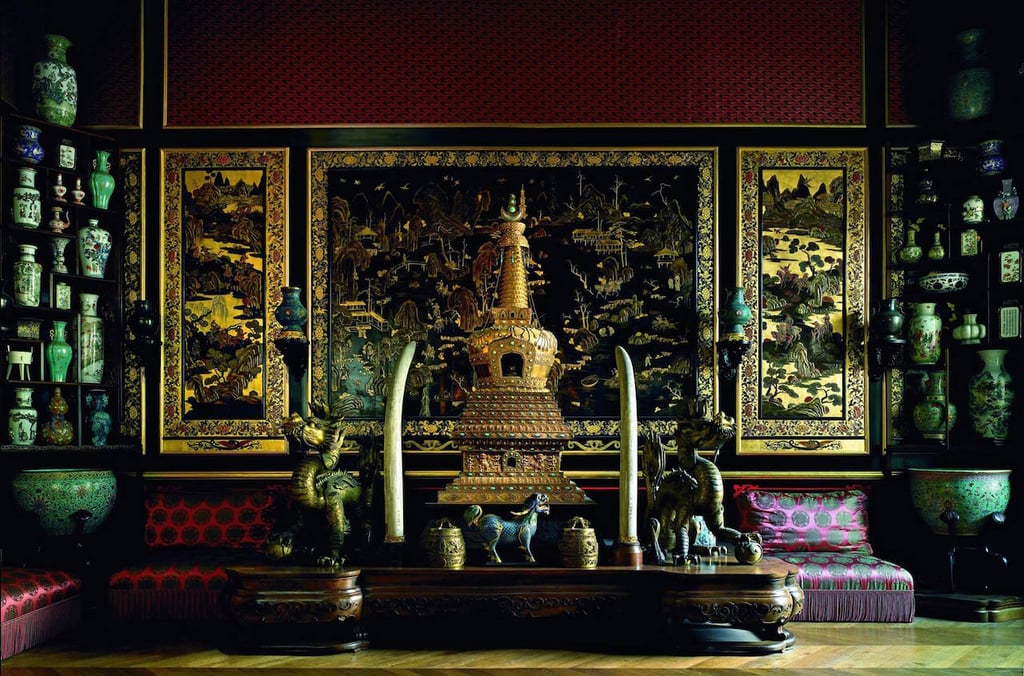It sounds like something straight out of fiction, and it was actually a minor plot point in Black Panther. But yes, it’s very much grounded in reality. A key group of Chinese billionaires have apparently been bankrolling heists across Europe and reclaiming cultural artifacts, all in a bid to right the wrongs committed by foreign forces in the past. And as if that wasn’t already enough to digest, the Chinese government is allegedly involved.

In and out, clean…
It all began in Stockholm, 2010. In the dead of a humid summer night, a car was set on fire as a classic distraction. While authorities found themselves preoccupied with the blazing vehicle, the anonymous thieves executed a brazenly ballsy smash-and-grab into the Chinese Pavilion of Drottningholm Palace. The permanent state collection of art and antiquities was raided. As law enforcement would announce to the press that following morning, the thieves had fled on fucking mopeds to a nearby lake before boarding a speedboat before anyone that mattered had realised what just happened. The heist was completed in under six minutes, and it was only the beginning.
Bergen, Norway. A month on from the Stockholm job. A team, quite possibly the very same one, “… descended from a glass ceiling…” and extracted a total of fifty-six items from the KODE Museum’s China Collection. The master thieves would return to the KODE in 2013 to lift another twenty-two items they had probably chosen to leave behind the first time round (more on this later).
Now once is an anomaly. Twice, chalk it up to coincidence. Three times? That’s a red-string pattern. And this particular pattern reached “firmly established” status when the Oriental Museum at Durham University was hit, shortly followed by the Cambridge University museum.

Activities migrated from England to France in 2015, when the former royal estate that is the Château de Fontainebleau in Paris found itself missing a fair few rarities. Rarities, after all, were the only things to be found in the palace’s grand Chinese Muse – created by the wife of Napoleon III, the last emperor of France, unlawfully collected by French soldiers in the late 1800s, and said to hold an “incalculable” value. True to form, this job was completed within seven minutes.
Ghosts amongst men, a pattern emerges
With no clues nor useful leads for investigators to proceed with, and barely any close-up sightings, “… knew what they were doing…” was accurate. Unsurprisingly, the lack of contact by authorities already breathless from chasing the shadow of a criminal spectre allowed these thieves to build momentum. Since the Parisian extraction, successful heists have occurred all throughout Europe. Some have made headlines, while others have been suppressed to avoid further humiliation. Fair play, really. Anyone in such a scenario would naturally be reluctant to “… publicize their own failures…”, in terms of both general embarrassment as well as saving on costs associated with the required security upgrades should their architectural shortcomings be made public. Eventually, six men were arrested in connection with the 2013 KODE job. As they were nothing more than hired muscle with no knowledge of who exactly commissioned their actions, this yielded zero useful intelligence.

Soon after, however, a more tangible modus operandi began to emerge:
- Thefts made known to the public were remarkably similar
- The thieves were professionals and left nothing to chance
- The items taken were exclusively Chinese antiquities which made their way into the targeted collections via foreign interference ie. invading forces (*stares at British*)
- It appeared as though they were working off a shopping list in the sense that they readily left other high-value objects just as ripe for the taking behind; thereby explaining why they chose to hit the KODE on two separate occasions when they coud have easily lifted all “recovered” relics the first time round – almost as if they were working from requests…
Puppetmasters in the shadows, the murky waters of politics & ethics
As China’s wealth snowballed in the early 2000’s, the upper echelons of Chinese society’s gentry began reclaiming artefacts left, right, and centre. This wasn’t your average rich-guy-impulse-buy. This was about returning the nation’s history, raped and ruined throughout the late 19th century, all the way to the mid-20th century. And where there are obscene sums of money, there is always obscene flexibility with what’s deemed lawful.
In 2009, Beijing announced plans to “… dispatch a “treasure hunting team” to various institutions across the US and Europe…”. Some of these efforts included teams of Chinese state media and Beijing museum employees led by an archaeologist, cataloging raided artifacts in every conceivable corner of the world. Initially, their objectives were vague but would become increasingly apparent in the years that followed. As we now know, this was merely the prelude. The unsettling calm before the storm…

A statesanctioned corporate conglomerate initiated a “… shadowy program aimed at locating and recovering lost art…”. This conglomerate was, and remains to be, the China Poly Group: an ungodly behemoth of industry who profits on everything from precious stones to military grade weapons. Structured by a skeleton comprised of the Communist Party, Poly also has the Chinese military intelligence at their disposal.
On a transnational scale, authorities simply lack the necessary power to take on the forces at hand. Norwegian officials remain fully aware of the politics involved in the sphere of international relations between Norway and China.
“If we say an item is in China, they say, ‘Prove it,’ ” states Kenneth Didriksen, the head of Norway’s art-crime unit.
“We don’t want to insult anyone.”
And it only gets murkier from there in terms of “true ownership”, as it were, and matters regarding what may be interpreted as retroactive corrections of the past.
“Displaying these objects in European museums is like a theft itself—they’re just showing it off without concern,” says Liu Yang, former member of the treasure-hunting delegation.

One must wonder if this entire endeavour would be considered as crucial of an undertaking today without the indelible mark left by China’s own self-destruction during the Cultural Revolution. It stands to reason that there would be plenty more cultural relics to preserve and appreciate had it not been for the widespread devastation of any and all elements representing the past by the misguided actions of Chairman Mao Zedong and his Communist Party. But hindsight is 20/20, and no one there is going to admit partial culpability to their own undoing, so…
In any case, the game is very much afoot. And the hunt doesn’t seem as though it will be grinding to a dramatic halt anytime soon.
Original research undertaken by Alex W. Palmer, read the original feature-length story here.
















